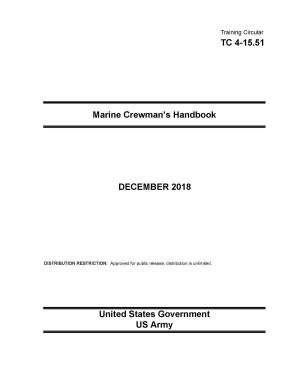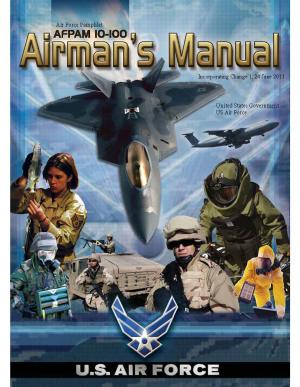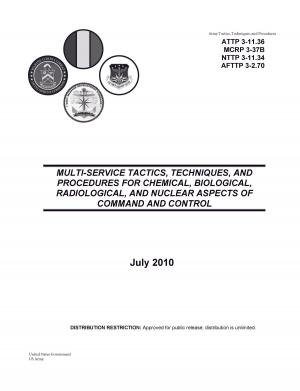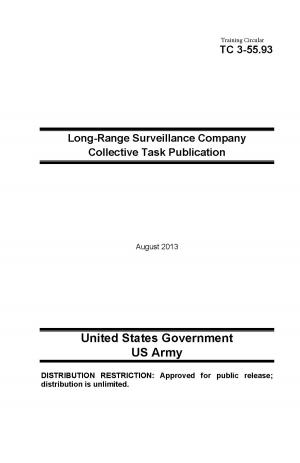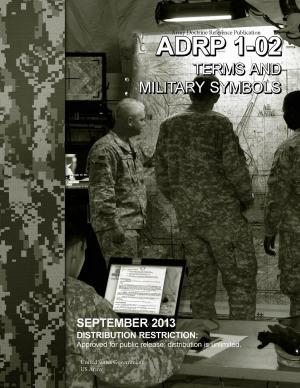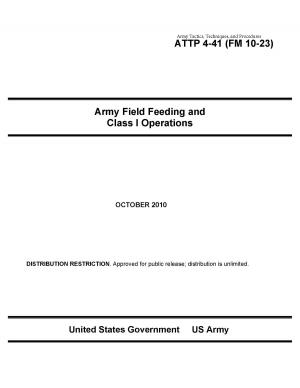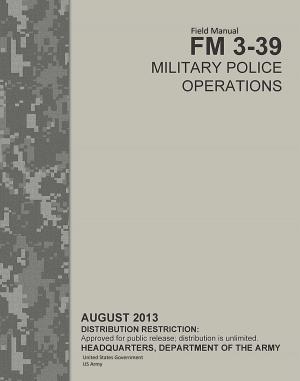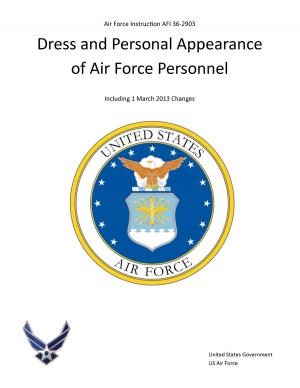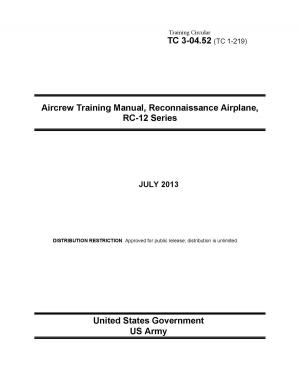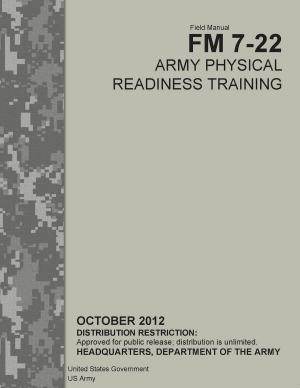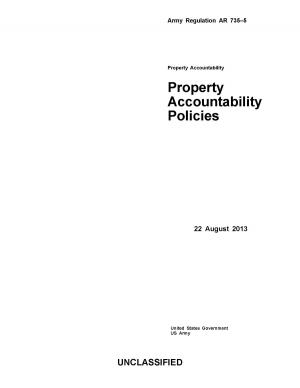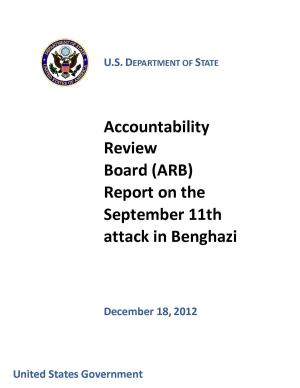Army Doctrine Publication ADP 3-28 Defense Support of Civil Authorities February 2019
Nonfiction, Reference & Language, Law, Military, Study Aids, Graduate & Professional, Armed Forces, Reference, Guides & Handbooks| Author: | United States Government US Army | ISBN: | 1230003099797 |
| Publisher: | eBook Publishing Team | Publication: | February 24, 2019 |
| Imprint: | Language: | English |
| Author: | United States Government US Army |
| ISBN: | 1230003099797 |
| Publisher: | eBook Publishing Team |
| Publication: | February 24, 2019 |
| Imprint: | |
| Language: | English |
This manual, Army Doctrine Publication ADP 3-28 Defense Support of Civil Authorities February 2019, is the doctrinal foundation for the Army’s contribution to defense support of civil authorities (DSCA). ADP 3-28 explains how the Army conducts DSCA missions and National Guard civil support missions as part of unified land operations. ADP 3-28 focuses on achieving unity of effort among the Army battalions, brigades, division headquarters, and Army Service component commands conducting DSCA with support from the generating force and in cooperation with joint and interagency partners.
The principal audience for ADP 3-28 is all members of the Army profession. Commanders and staffs of Army headquarters serving as joint task force headquarters should also refer to applicable joint doctrine concerning the range of military operations and joint forces. In addition, trainers, educators, and contractors throughout the Army will also use this publication as a doctrinal reference.
ADP 3-28 clarifies similarities and differences between defense support of civil authorities (DSCA) tasks and other tasks of decisive action. Stability tasks and DSCA tasks are similar in many ways. Both revolve around helping partners on the ground within areas of operations. Both tasks require Army forces to provide essential services and work together with civil authorities. However, homeland operational environments differ from those overseas in terms of law, military chain of command, use of force, and inter-organizational coordination among unified action partners. This ADP helps Army leaders understand how operations in the homeland differ from operations by forces deployed forward in other theaters. It illustrates how domestic operational areas are theaters of operations with special requirements. Moreover, this ADP recognizes that DSCA is a joint mission that supports the national homeland security enterprise. The Department of Defense conducts DSCA under civilian control, based on U.S. law and national policy, and in cooperation with numerous civilian partners. National policy, in this context, often uses the word joint to include all cooperating partners, as in a joint field office led by civil authorities.
The utilization of military forces during periods of domestic emergency is not undertaken lightly. The military however brings with it unique abilities, in terms of both capability and capacity which provide respondents with the resources needed to respond to an incident. The use of military forces in the responses to hurricanes Andrew in 1992 and Katrina in 2005 illustrate some of the different responses the U.S. military can provide. They also led the government to realize that additional coordination was required before an incident to ensure a successful response. An in-depth look at the tenets of DSCA operations, authorities, and the national preparedness system framework are discussed in chapter one.
The support the Army provides to civil authorities falls into four main tasks: Provide support for domestic disasters, provide support for domestic chemical, biological, radiological, and nuclear incidents, provide support for domestic civilian law enforcement agencies, and provide other designated support. Due to legal limitations such as the Posse Comitatus Act, the purpose for which the military can respond to these incidents is constrained, allowing a military response only to; save lives, restore essential services, maintain or restore law and order, protect infrastructure and property, support maintenance or restoration of local government, or shape the environment for intergovernmental success. Both state and federal laws detail how support is requested, provided and limited in both scope and duration. Further information on the employment of military forces and legal restrictions on doing so are provided in chapter two.
A successful response to any disaster—natural or man-made—requires a whole-of-government approach. Such endeavors are inherently complicated due to the large number of organizations from local, state, and federal governments, and non-governmental, humanitarian organizations. Chapter three outlines key organizations which routinely respond to such incidents, and outlines key considerations for command and control of the military portion of that response. Bringing a unity of effort to a collection of independent organizations is vital to reducing the natural cacophony that occurs when a multitude strive independently and achieves better results.
The final chapter describes in further detail several tasks the Army may be called upon to support, ranging from chemical, biological, radiological, or nuclear (CBRN) incidents, to natural disasters and health pandemics. These tasks are addressed from a war-fighting function perspective, and highlight the application of material from earlier chapters, such as the rules for the use of force, and the differences in tasks performed by Soldiers operating under federal authority and the National Guard’s civil support across the DSCA range of response capabilities.
This manual, Army Doctrine Publication ADP 3-28 Defense Support of Civil Authorities February 2019, is the doctrinal foundation for the Army’s contribution to defense support of civil authorities (DSCA). ADP 3-28 explains how the Army conducts DSCA missions and National Guard civil support missions as part of unified land operations. ADP 3-28 focuses on achieving unity of effort among the Army battalions, brigades, division headquarters, and Army Service component commands conducting DSCA with support from the generating force and in cooperation with joint and interagency partners.
The principal audience for ADP 3-28 is all members of the Army profession. Commanders and staffs of Army headquarters serving as joint task force headquarters should also refer to applicable joint doctrine concerning the range of military operations and joint forces. In addition, trainers, educators, and contractors throughout the Army will also use this publication as a doctrinal reference.
ADP 3-28 clarifies similarities and differences between defense support of civil authorities (DSCA) tasks and other tasks of decisive action. Stability tasks and DSCA tasks are similar in many ways. Both revolve around helping partners on the ground within areas of operations. Both tasks require Army forces to provide essential services and work together with civil authorities. However, homeland operational environments differ from those overseas in terms of law, military chain of command, use of force, and inter-organizational coordination among unified action partners. This ADP helps Army leaders understand how operations in the homeland differ from operations by forces deployed forward in other theaters. It illustrates how domestic operational areas are theaters of operations with special requirements. Moreover, this ADP recognizes that DSCA is a joint mission that supports the national homeland security enterprise. The Department of Defense conducts DSCA under civilian control, based on U.S. law and national policy, and in cooperation with numerous civilian partners. National policy, in this context, often uses the word joint to include all cooperating partners, as in a joint field office led by civil authorities.
The utilization of military forces during periods of domestic emergency is not undertaken lightly. The military however brings with it unique abilities, in terms of both capability and capacity which provide respondents with the resources needed to respond to an incident. The use of military forces in the responses to hurricanes Andrew in 1992 and Katrina in 2005 illustrate some of the different responses the U.S. military can provide. They also led the government to realize that additional coordination was required before an incident to ensure a successful response. An in-depth look at the tenets of DSCA operations, authorities, and the national preparedness system framework are discussed in chapter one.
The support the Army provides to civil authorities falls into four main tasks: Provide support for domestic disasters, provide support for domestic chemical, biological, radiological, and nuclear incidents, provide support for domestic civilian law enforcement agencies, and provide other designated support. Due to legal limitations such as the Posse Comitatus Act, the purpose for which the military can respond to these incidents is constrained, allowing a military response only to; save lives, restore essential services, maintain or restore law and order, protect infrastructure and property, support maintenance or restoration of local government, or shape the environment for intergovernmental success. Both state and federal laws detail how support is requested, provided and limited in both scope and duration. Further information on the employment of military forces and legal restrictions on doing so are provided in chapter two.
A successful response to any disaster—natural or man-made—requires a whole-of-government approach. Such endeavors are inherently complicated due to the large number of organizations from local, state, and federal governments, and non-governmental, humanitarian organizations. Chapter three outlines key organizations which routinely respond to such incidents, and outlines key considerations for command and control of the military portion of that response. Bringing a unity of effort to a collection of independent organizations is vital to reducing the natural cacophony that occurs when a multitude strive independently and achieves better results.
The final chapter describes in further detail several tasks the Army may be called upon to support, ranging from chemical, biological, radiological, or nuclear (CBRN) incidents, to natural disasters and health pandemics. These tasks are addressed from a war-fighting function perspective, and highlight the application of material from earlier chapters, such as the rules for the use of force, and the differences in tasks performed by Soldiers operating under federal authority and the National Guard’s civil support across the DSCA range of response capabilities.

